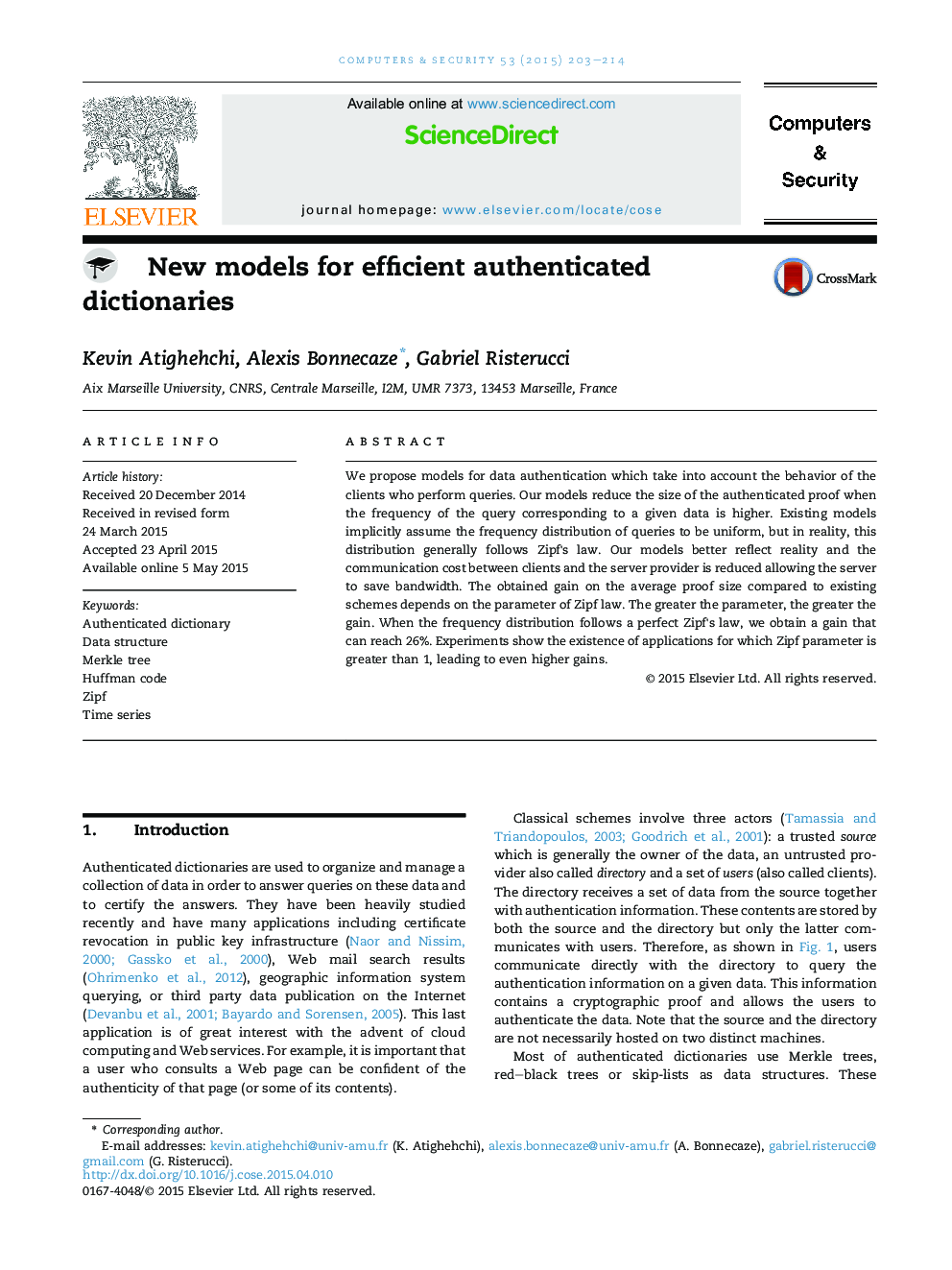| Article ID | Journal | Published Year | Pages | File Type |
|---|---|---|---|---|
| 455849 | Computers & Security | 2015 | 12 Pages |
•We propose new models for efficient authenticated dictionaries.•Our models reduce the average authenticated proof size.•Obtained gain reaches 26% when the frequency distribution follows a perfect Zipf.•Experiments show even higher gains when Zipf parameter is greater than 1.
We propose models for data authentication which take into account the behavior of the clients who perform queries. Our models reduce the size of the authenticated proof when the frequency of the query corresponding to a given data is higher. Existing models implicitly assume the frequency distribution of queries to be uniform, but in reality, this distribution generally follows Zipf's law. Our models better reflect reality and the communication cost between clients and the server provider is reduced allowing the server to save bandwidth. The obtained gain on the average proof size compared to existing schemes depends on the parameter of Zipf law. The greater the parameter, the greater the gain. When the frequency distribution follows a perfect Zipf's law, we obtain a gain that can reach 26%. Experiments show the existence of applications for which Zipf parameter is greater than 1, leading to even higher gains.
